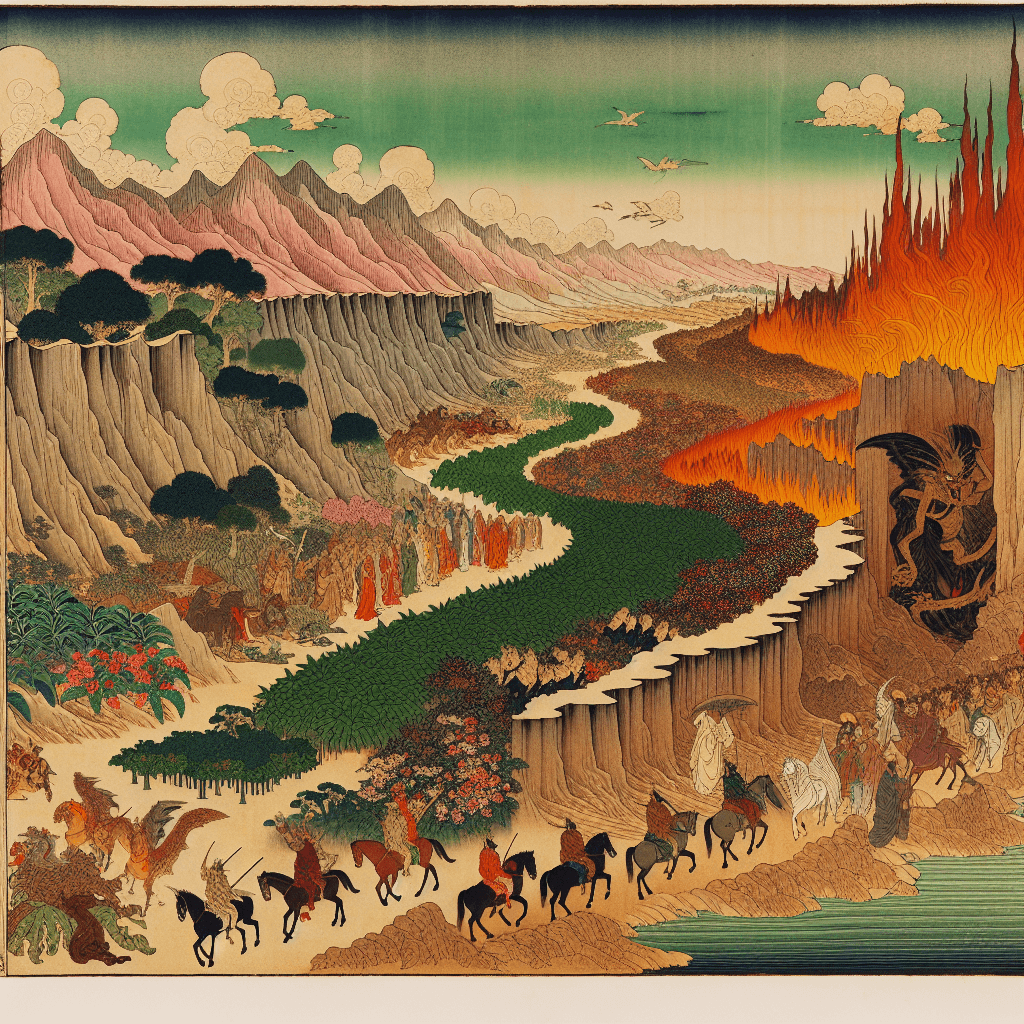The title of the blog post is "Unveiling Ancient Echoes: The Historic and Biblical Legacy of the Valley of Hinnom.
syndu | Feb. 15, 2025, 5:16 a.m.

Unveiling Ancient Echoes: The Historic and Biblical Legacy of the Valley of Hinnom
The Valley of Hinnom, known in Hebrew as Gei Hinnom, stands on the southwestern edge of Jerusalem, exuding an air of profound historical and religious significance. Over countless generations, this valley has sparked spirited discussions and shaped cultural narratives, earning it a reputation that blends both reverence and foreboding.
Early Biblical Mentions
This valley emerges in multiple passages of the Hebrew Bible, most strikingly linked to the worship of the Canaanite god Moloch. Ancient accounts describe child sacrifices performed in this place—abhorrent rites condemned vehemently by prophets such as Jeremiah and Isaiah. The Book of Jeremiah (7:31) highlights the moral outrage, warning of divine consequences for such acts. These harrowing references allowed the Valley of Hinnom to become a lasting symbol of society’s gravest transgressions.
Ominous Reputation and Symbolism
The association with Moloch and child sacrifice infused the Valley of Hinnom with a chilling legacy. It came to represent judgment and harsh recompense, vividly illustrating the consequences that befell those who deviated from sacred commandments. As Jerusalem’s religious thought evolved—particularly during the Second Temple period—the valley’s foreboding image intertwined with emerging eschatological ideas. Over time, the concept of Gehinnom (often rendered “hell” or “the place of fiery torment”) took shape, amplifying the valley’s reputation as a realm of divine judgment and purification.
From the Second Temple Era to Broader Traditions
During the Second Temple era, literature such as the Book of Enoch and the Apocalypse of Zephaniah further entrenched the notion of Gehinnom as a fiery domain reserved for sinners. These expanded descriptions intertwined with preexisting lore, strengthening the valley’s association with justice and retribution. Later Christian writings adopted the term “Gehenna,” alluding to ultimate judgment, while Islamic traditions recognized parallel concepts of moral accountability—underscoring the valley’s multireligious resonance.
Enduring Significance
Over centuries, the Valley of Hinnom’s deep-rooted narrative has shaped beliefs across diverse faiths, evolving in parallel with theological discourse. Today, its history remains etched into ancient texts and cultural memory. By peeling back each layer—from biblical prohibitions against child sacrifice to broader reflections on sin and repentance—one can glimpse how a single location can weave together myth, religion, and a tangible sense of place.
Conclusion
From its earliest scriptural mentions to its transformation into a symbol of final judgment, the Valley of Hinnom offers a complex tapestry of moral lessons and eschatological visions. Its enduring influence reflects how geography and spirituality can coexist, challenging generations to contemplate themes of punishment, redemption, and devotion. By revisiting these roots, we come to appreciate the Valley of Hinnom not just as a physical space but as a powerful testament to humanity’s evolving relationship with the divine.



